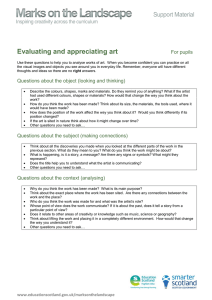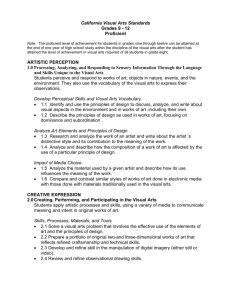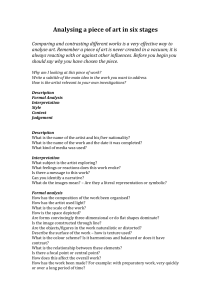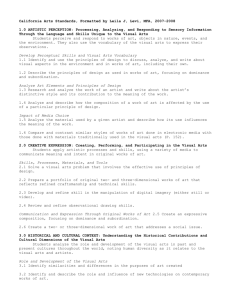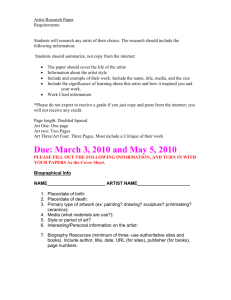Art Analysis - Fredericksburg Academy
advertisement
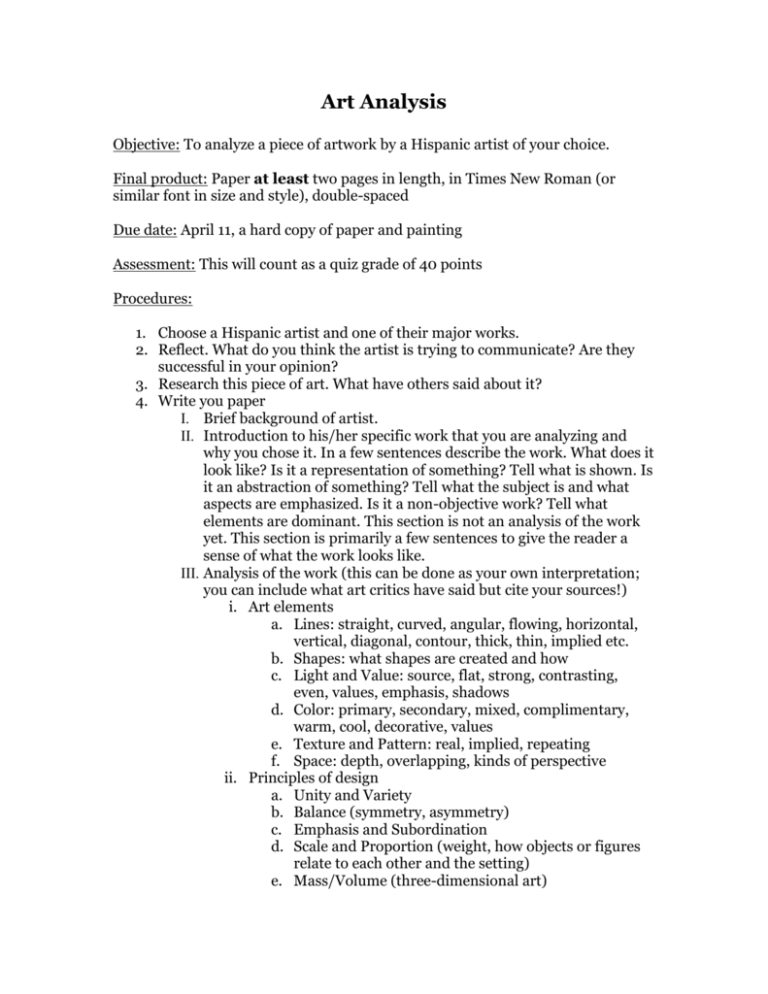
Art Analysis Objective: To analyze a piece of artwork by a Hispanic artist of your choice. Final product: Paper at least two pages in length, in Times New Roman (or similar font in size and style), double-spaced Due date: April 11, a hard copy of paper and painting Assessment: This will count as a quiz grade of 40 points Procedures: 1. Choose a Hispanic artist and one of their major works. 2. Reflect. What do you think the artist is trying to communicate? Are they successful in your opinion? 3. Research this piece of art. What have others said about it? 4. Write you paper I. Brief background of artist. II. Introduction to his/her specific work that you are analyzing and why you chose it. In a few sentences describe the work. What does it look like? Is it a representation of something? Tell what is shown. Is it an abstraction of something? Tell what the subject is and what aspects are emphasized. Is it a non-objective work? Tell what elements are dominant. This section is not an analysis of the work yet. This section is primarily a few sentences to give the reader a sense of what the work looks like. III. Analysis of the work (this can be done as your own interpretation; you can include what art critics have said but cite your sources!) i. Art elements a. Lines: straight, curved, angular, flowing, horizontal, vertical, diagonal, contour, thick, thin, implied etc. b. Shapes: what shapes are created and how c. Light and Value: source, flat, strong, contrasting, even, values, emphasis, shadows d. Color: primary, secondary, mixed, complimentary, warm, cool, decorative, values e. Texture and Pattern: real, implied, repeating f. Space: depth, overlapping, kinds of perspective ii. Principles of design a. Unity and Variety b. Balance (symmetry, asymmetry) c. Emphasis and Subordination d. Scale and Proportion (weight, how objects or figures relate to each other and the setting) e. Mass/Volume (three-dimensional art) IV. Opinions and Conclusions. This is the part of the paper where you go beyond description and offer a conclusion and your own informed opinion about the work. You should tie in any pertinent historical or social contexts. i. In this section, discuss how and why the key elements and principles of art used by the artist create meaning. ii. Support your discussion of content with facts about the work V. Don’t forget your Works Cited!
